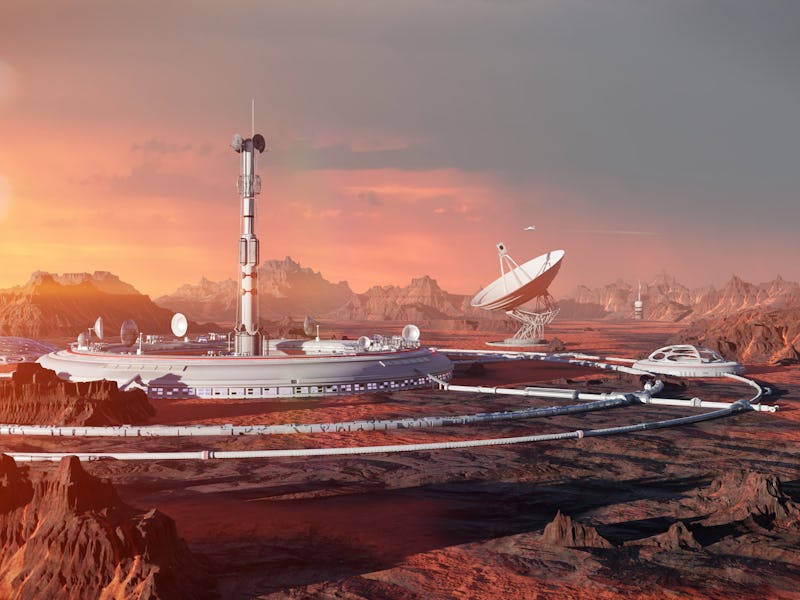Musk Reads: Why SpaceX's Mars city could become a beacon of innovation
Starship could host entertainment and SpaceX is worth more than you think. What happened to last week's Falcon 9?

Starship could host entertainment and SpaceX is worth more than you think. What happened to last week’s Falcon 9? It’s Musk Reads: SpaceX Edition #145.
A version of this article appeared in the “Musk Reads” newsletter. Sign up for free here.
Musk quote of the week
“Driving hard for fully reusable orbital flight this year!”
- Read more about Musk’s goal for Starship.
SpaceX Starship
SpaceX plans to send humans to Mars using the Starship, but what will they do there? Musk aims to build a city on the planet by 2050. Robert Zubrin, president of the Mars Society who helped convince Musk to set his sights on Mars, explained in a National Review article over the weekend why it would be beneficial. Describing the nascent city as “a pressure cooker for invention,” Zubrin explains how the city would work similarly to the 19th-century United States, with a freedom to innovate and an unusually technology-focused population. The Martian citizens could create “revolutionary advances in robotics, artificial intelligence, genetically modified organisms, synthetic biology, and many other fields” before licensing the patents to Earth in exchange for much-needed imports.
Get ready for concerts in space. Musk explained this week how entertainment on the Starship would be provided in the pressurized cabin, which is expected to measure at around 1,000 cubic meters. Musk explained via his Twitter feed that “there will be a common area in the forward section with a big window like this. It will be a lot heavier than steel, but not dangerous. Consider astronauts on the moon with a very thin windowed helmet. They were fine.” Read more.
In other SpaceX news…
It seems the first Crew Dragon mission could run longer than expected. The “Demo–2” mission, expected in the first half of this year, will send astronauts Bob Behnken and Doug Hurley to the International Space Station for around two weeks in SpaceX’s first manned mission. But SpaceNews reports that current training points toward a longer mission. Former astronaut and SpaceX employee Garrett Reisman claimed on Sunday that the pair “are being trained for a long-duration mission as ISS crewmembers.” Such a move could reduce pressure on NASA’s schedule, allowing the agency to maintain a larger size crew at the station.
How much is SpaceX worth? Possibly more than you think. The private company is looking to raise $250 million in funding by selling shares at $220 each. This would place the company’s value at around $36 billion, an increase of $2.7 billion from May 2019.
What’s next for SpaceX: SpaceX is scheduled to launch the 20th Commercial Resupply Services mission. The launch will take off from Cape Canaveral Air Force Station in Florida on March 2 at 1:45 a.m. Eastern time. It’s expected to be the first time that SpaceX lands a rocket after a launch for the United States military.
Musk Reads mailroom
James writes:
What will be the cost of Starlink? Will I get home and phone connection? Hawaii?
Hawaii will likely come in the second phase of rollout in 2021, as the first phase focuses on the northern United States and Canada. Other details are scarce, but evidence suggests the company is aiming to compete with $80 per month satellite subscriptions that it sees as subpar.
Jay Ueki writes:
How can we volunteer for Neuralink’s program?
Neuralink has not yet provided information, likely due to the initial focus. The company is aiming to complete initial tests on patients with quadriplegia this year. It may take a while before the system reaches the general public, as Musk said in July 2017 that it will probably take another eight to 10 years. But until it receives approval from the FDA, these time frames are up in the air.
Got any comments or queries? Don’t forget to send them over to muskreads@inverse.com.
Video of the week
YouTuber Scott Manley gives a detailed breakdown of last week’s failed booster landing. A Falcon 9 failed to land on Of Course I Still Love You after launching 60 Starlink satellites. Manley cited sources claiming the fairing was not recovered and the booster broke in half. Special thanks to reader Charles Griffin for the request. https://www.youtube.com/watch?v=QyJS1QcPRYM
Got any photos or videos you’d like to share? Feel free to send them over to muskreads@inverse.com.
The ultra-fine print
This has been Musk Reads: SpaceX Edition #145, the weekly rundown of essential reading about futurist and entrepreneur Elon Musk. I’m Mike Brown, an innovation journalist for Inverse.
- Email me directly at mike.brown@inverse.com and follow Inverse on Twitter @inversedotcom. Follow me on Twitter @mikearildbrown.
- Got any comments or queries? Don’t forget to send them over to muskreads@inverse.com.
A version of this article appeared in the “Musk Reads” newsletter. Sign up for free here.